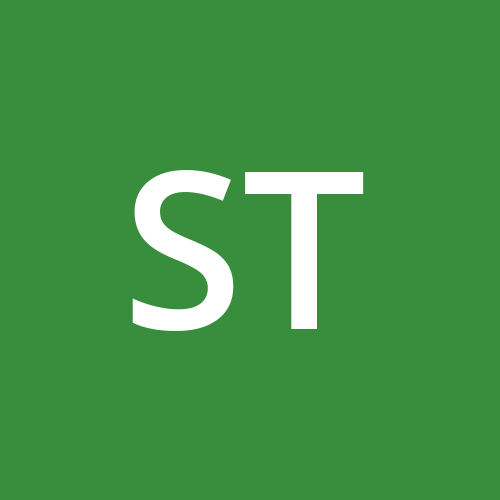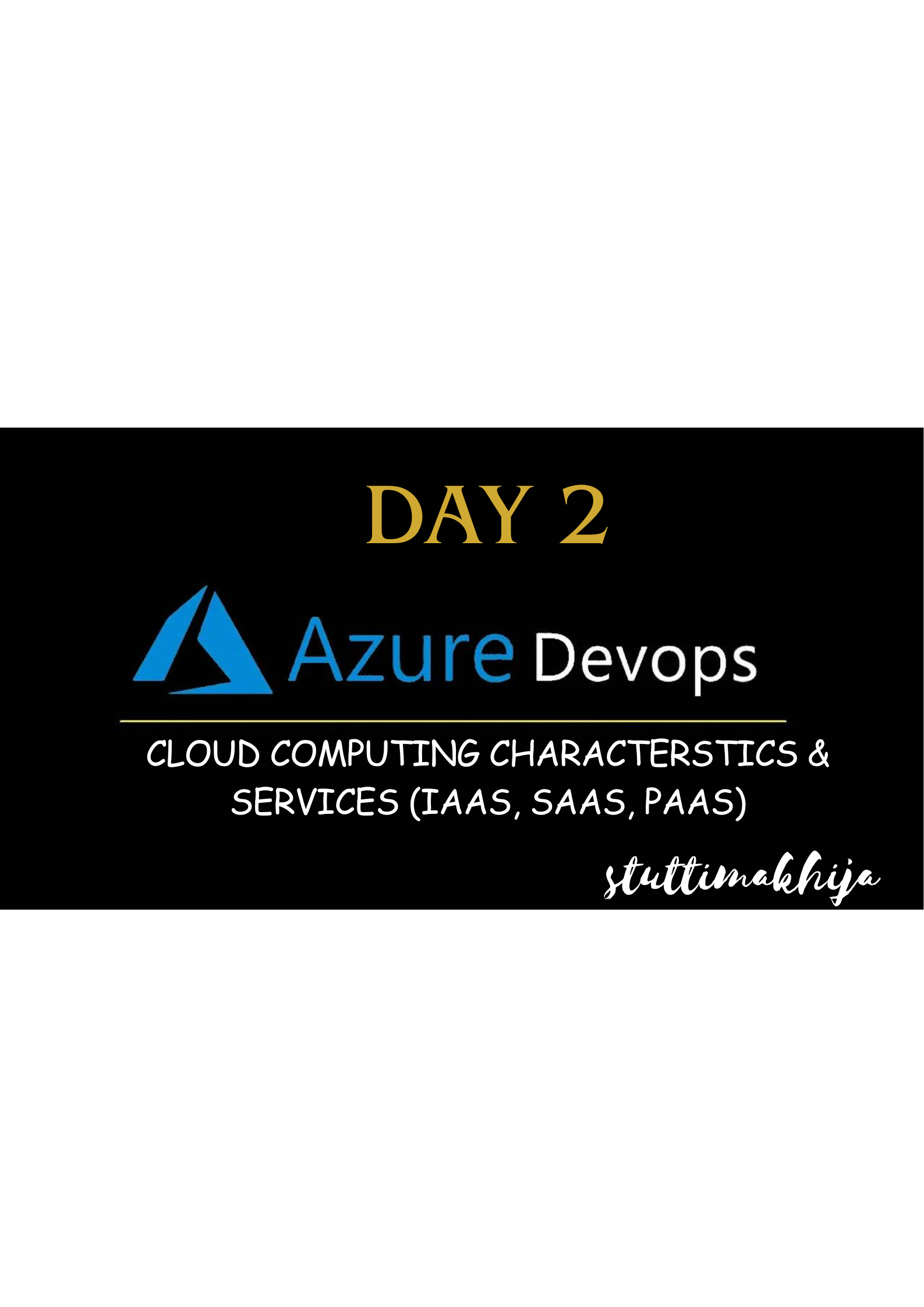Azure DevOps- Day 2
 STUTTIMAKHIJA
STUTTIMAKHIJA
Let's understand cloud computing characteristics and its services.
Characteristics of cloud computing
NIST (National Institute of Technology) lists five essentials of cloud computing:
on-demand self-service: With cloud computing, you can access computing services, like server time and network storage, automatically. We won't need to interact with service provider. Cloud customer can access their cloud accounts through a web self-service portal to view their cloud services, monitor their usage, and provision and de-provision services.
Broad Network Access: We can access cloud services over the network and on portable devices like mobile devices, tables, laptops and desktop computers. A public cloud uses the internet; a private cloud uses a LAN. Latency & bandwidth both play a major role in cloud computing and broad network access, as they affect the quality of service.
Resource Pooling: With resource pooling, multiple customers can share physical resources using a multi-tenant model. This model assigns and reassigns physical and virtual resources based on demand. Multi-tenancy allows customers to share the same application or infrastructure while maintaining privacy and security. Though customers won't know the exact location of their resources, they may be able to specify the location at a higher level of abstraction, such as country, state, or data center. Memory, processing, and bandwidth are among the resources that customers can pool.
Rapid Elasticity: Cloud services can be elastically provisioned and released, sometimes automatically, so customer can scale quickly based on demand. Customers can engage with these capabilities at any point of time in any quantity. Customers can also scale cloud use, capacity, and cost without extra contracts or fees. With rapid elasticity, you won't need to but computer hardware. Instead, can use the cloud provider's cloud computing resources.
Measured Service: In cloud systems, a metering capability optimizes resource usage at a level of abstraction appropriate to the type of service. Example: we can use a measured service of storage, processing, bandwidth and users. Payment is based on actual consumption by the customer via a pay-for -what-you-use model. Monitoring, controlling, and reporting resource use creates a transparent experience for both customers and providers of the service.

Other cloud computing characteristics
While not among the NIST essential characteristics, cloud computing offers a variety of other characteristics that can benefit customers.
Resiliency & Availability: Resilience in cloud computing refers to the ability of a service to recover quickly from any disruption. Cloud resiliency is measured by how fast its servers, databases and network restart and recover after any damage. To prevent data loss, cloud services create a copy of the stored data. If one server loses data for any reason, the copy version from the other server restores.
Availability is a related key concept in cloud computing. The benefit of cloud services is that we can access them remotely, so there are no geographical restrictions when using cloud resources.
Flexibility: Companies need to scale as their business grows. The cloud provides customers with more freedom to scale as they please without restating the server. They can choose from several payment options to avoid overspending on resources we don't need.
Remote work: Cloud computing helps users to work remotely. Remote workers can safely and quickly access corporate data via their devices, including laptops and smartphones. Employees who work remotely can also communicate with each other and perform their jobs effectively using the cloud.
Cloud computing Resources/Services
Azure cloud computing is offering 200+ resources/ services.
What are Azure resources/ services?
Anything that we are creating/deploying as a part of our application need is called as resource or service. Example: Virtual machines, databases, Storage accounts, Virtual machines, container instances, load balancers, app services etc.
All these resources/ services are the ingredients for the application development and deployment.
There are following three types of cloud service model: -
IaaS (Infrastructure as a Service)
PaaS (Platform as a Service)
SaaS (Software as a Service)

IaaS (Infrastructures as a Service)
IaaS is also known as HaaS (Hardware as a Service). It is a computing infrastructure managed over the internet. The main advantage of using IaaS is that it helps users to avoid the cost and complexity of purchasing and managing the physical servers.
Characteristics of IaaS:
Resources are available as a service
Services are highly scalable
Dynamic and flexible
GUI and API-based Access
Automated administrative tasks
Examples: Digital Ocean, Linode, AWS, Microsoft Azure, Googe Compute Engine (GCE), Rackspace, and Cisco Metacloud.
PaaS (Platform as a Service)
PaaS cloud computing platform is created for the programmers to develop, test, run, and manage the applications.
Characteristics of PaaS:
Accessible to various users via the same development application.
Integrated with web services and databases.
Builds on virtualization technology, so resources can easily be scaled up or down as per the organization's need.
Support multiple languages and frameworks
Provides an ability to "Auto-scale".
Examples: AWS Elastic Beanstalk, Windows Azure, Google App Engine, OpenShift.
SaaS (Software as a Service)
SaaS is also called as on-demand software". It is a software in which the applications are hosted by a cloud service provider. Users can access the applications with the help of internet connection and web browser.
Characteristics of SaaS:
managed from a central location
Hosted on a remote server
accessible over the internet
users are not responsible for hardware and software updates. Updates are applied automatically.
The services are purchased on the pay-per-use basis.
Example: BigCommerce, Google Apps, Salesforce, ZenDesk, GoToMeeting, Cisco WebEx.
Subscribe to my newsletter
Read articles from STUTTIMAKHIJA directly inside your inbox. Subscribe to the newsletter, and don't miss out.
Written by
